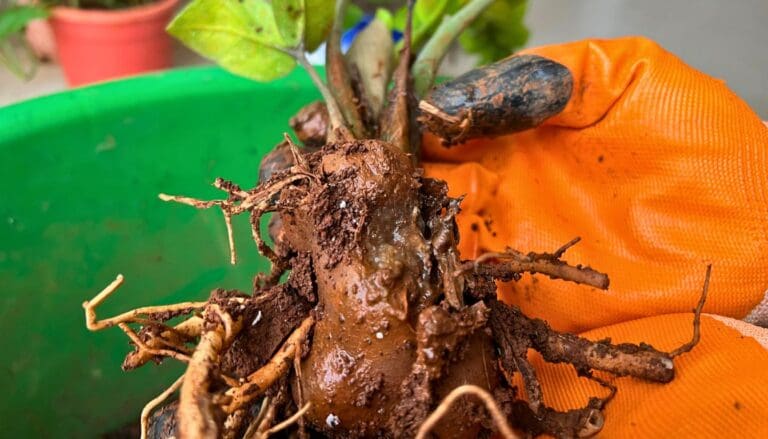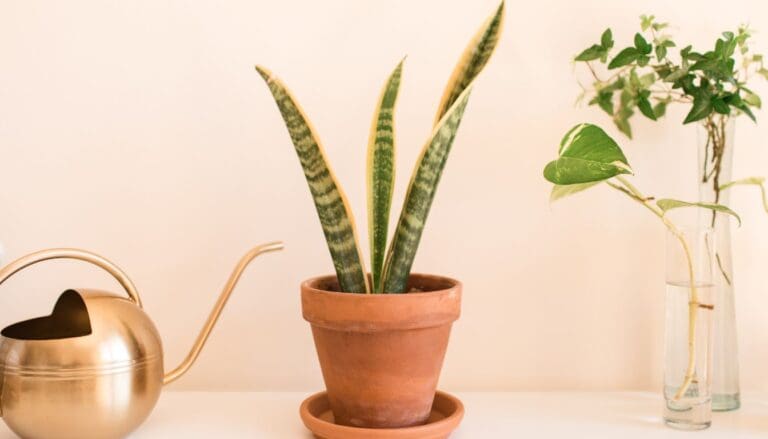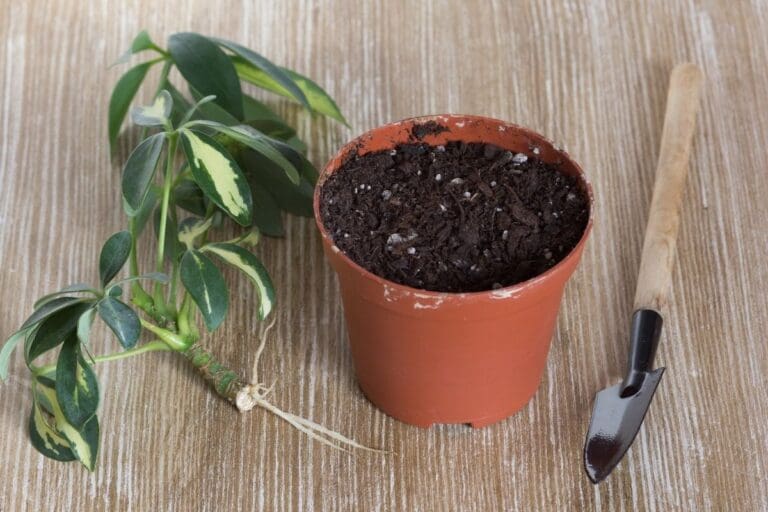Spider Plants Watering Guide: How Much, How Often & More!
Water is an essential element for any living being, including plants. Plants also need water to survive, whether less or more. Inappropriate watering in spider plants can lead to brown foliage, yellow leaves, leaf dropping, curled leaves, etc.
Water your spider plant thoroughly when the soil under 1 inch from the top feels dry. It will be ideal if you don’t have a fixed watering regime. Instead, feel the soil and water whenever needed. The water requirement of spider plants depends upon various factors like light, temperature, humidity, pot size, etc.
I know it can be a struggle even for an experienced hobbyist whenever they get a new plant home. Thus, it is crucial to understand your spider plants’ visual cues when they need water or are overwatered.
We should learn in detail the right way to water our spider plant. We are here to make it simple for you and clear all your doubts regarding watering your spider plant. So, let’s get right into it.

Please note: Simplify Plants is reader-supported. Some links in the post are affiliate links and I get a commission from purchases made through links in the post.
When to water spider plant?
Spider plants need little care and should be monitored when watering them. Even seasons affect the water needs of your spider plant.
Summer
It is evident that the sun is intense during the summer, and the soil dries out quickly. During this time, the soil will need water more frequently.
Summer means an increased need for water, which can be once a week or more.
However, spider plants can stay dry for longer than other houseplants but will need water for proper functioning.
It would be best if you ideally kept checking the soil every 4-5 days of watering them.
So water your spider plant when the soil is dry or once a week routine will work as well.
Winter
During winter, you should not stress your spider plant by overwatering them. They like to rest during this time as the sun also rests and is not too strong.
The growth rate reduces during the winter. The soil takes 2-3 weeks to dry out, and it doesn’t need too frequent watering.
Examine the soil before watering because if you have kept your spider plant indoors during the winter, then they might take a month to dry out.
How to tell if spider plant needs water?
Plants cannot speak, but they give signs expecting you to identify and register them. Spider plants can get stressed due to watering inappropriately.
Through their behavior and growth patterns, you can see that they are suffering, whether due to external reasons or internal issues.
Your spider plant will give you visual cues whenever they have any problems.
And some of the common signs that your spider plant is thirsty and needs water are:
The soil is dry

Soil is a part of the plant that will go through a lot of stress both internally and externally but will try its best to tolerate and keep the plant healthy.
But when you keep stressing them due to your improper care routines, the soil will start showing up to be unwell.
When you water your spider plant frequently, the soil will remain thirsty and dry for too long. You can see the soil and tell that the soil needs water as it will look dry and dull.
The best way to give your plant appropriate water is by checking the soil every 4-5 days.
Suppose the soil feels moist, wait for three days, and check again. You can use a moisture meter as well to check the moisture level of the soil all the time.
Soil pulling away from the edge on the top
Soil pulling away is the case when you have ignored watering your spider plant for way too long. The soil is too dry and pulling away from the corner of the pot at the top.
Underwatering and intense lighting for an extended period is the main culprit of soil pulling away from the edge of the pot.
When you follow a single watering routine ignoring other factors affecting the plant’s watering needs, this situation occurs.
To re-hydrate your spider plant, soak the pot in a bucket full of water for about an hour. Now, take out the pot and let the excess water drench completely.
Your spider plant has brown crisp foliage

Brown crisp foliage is an unsightly view on your plant and will keep bothering you till you get rid of them.
The spider plant with brown crisp foliage tells you that the leaves are losing moisture from them and turning brown due to lack of water.
This situation occurs due to under watering and direct sun that your plant is getting more than required.
It can be rectified, but that doesn’t mean already affected leaves will turn green. However, the new leaves will grow healthy with proper care. Give the plant proper watering and 6-7 hours of indirect light.
Your spider plant has droopy, curly leaves

Droopy and curled leaves are usually due to under watering the plant frequently. The leaves lose their moisture and curl due to the same.
Check the soil moisture. If the soil seems dry, then watering could be the issue. Curl and droopy leaves are the initial signs that they need water.
It would be best if you did not wait for these signs to tell you when to water your plant.
Bonus Tip:
There are a few ways to check the soil dryness:
- Moisture meter
- Finger/Skewer
- Wet pot
- Lifting pot
Factors affecting the need for water
Several factors affect the water need of your spider plant. Thus, you need to understand that two different spider plants in the same room might have different watering needs.
Let us learn what these factors are and how two spider plants can have a different watering requirements.
Type of pot

Pot types are one of the crucial aspects that usually gets ignored or are not consider important. Spider plants like to stay in a balanced environment. i.e., neither too dry nor too moist.
When you choose the right pot type, the plant benefits from the right pot type. Porous pots are perfect for your spider plants. These include:
- Terracotta pot
- Concrete pot
- Wooden pot
These pots are porous and allow air circulation. The water will not stay in the soil for too long and prevent the soil from sogginess. We recommend you to plant your spider plants in any of the above-given pot types.
Pots that retain water comparatively more from the above-given pot types are:
- Ceramic pots
- Glass pots
- Metal pots
Pots that keep the soil soggy as they do not absorb water at all are:
- Plastic pots
These pots are perfect for planters who forget to water their spider plants all the time. They also work exceptionally well as hanging planters.
If your spider plant is kept in terracotta pots, it will need frequent watering compared to plastic pots. That is because terracotta pots absorb the moisture and release it into the atmosphere, which dries up the soil quicker than plastic pots.
Soil
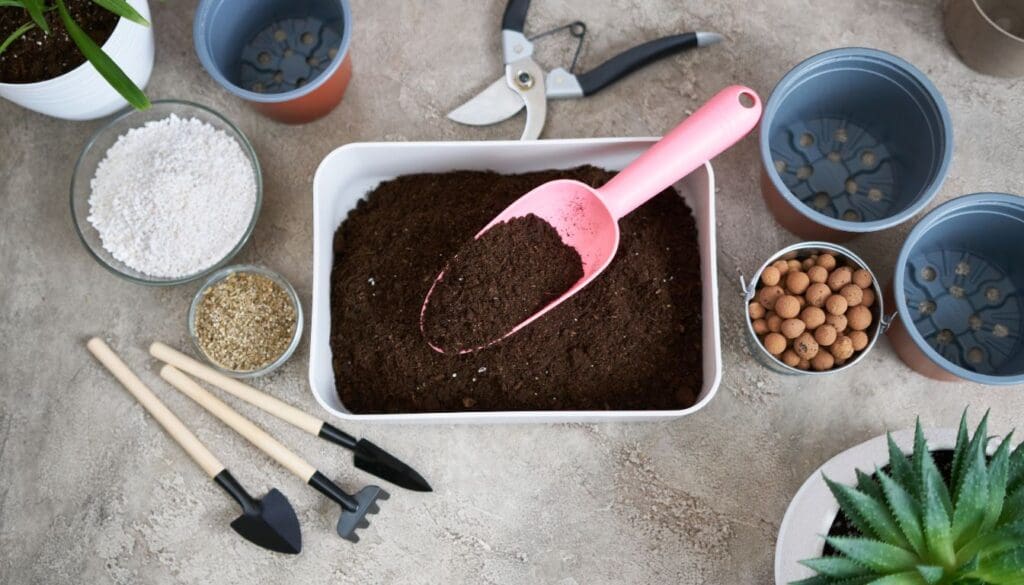
Soil plays a vital role in a plant’s growth and health. The spider plants prefer well-draining soil as it will prevent the soil from remaining wet for long.
The soil mix for your spider plant should be aerated as the spider plants like even moisture. Such soil will allow air and water to flow easily and will not remain soggy for too long.
A good quality potting mix will be sufficient for your spider plants.
If the soil mix is heavy, the soil will not dry fast, and the water will get stored at lower parts of the pot, making your spider plant susceptible to root rot.
Also Read: What Kind Of Soil Is Good For Spider Plant?
Temperature
Spider plants prefer a temperature between 55°F to 85°F. If the temperature level is ideal, the spider plants will need water less frequently.
If the temperature level is below 55°F, the soil will dry slowly and need water less frequently. Under 35°F is when the plant will hardly need water and also will hardly show any growth.
If the temperature level is above 90°F, then the water need will increase as the transpiration rate will increase during this condition.
Keeping the plant at an ideal temperature level will keep the plant healthy and growing. In this condition, the plant will need water once a week as a general rule, but you should keep a check on your plant every 4-5 days.
Season
Season also matters in the case of the water requirement of plants. As the season changes, the cultural conditions change. The spider plant’s water needs will be different in summer and winter.
During summer, the sun is intense, the temperature level is high, and the humidity is low, which means the transpiration rate is more. The uptake of potential micronutrients is also more.
It makes it evident that your spider plant in such conditions will need water more frequently to have healthy growth and easy flow of nutrients and water.
During winter, the condition reverses, and the need for water also reverses. The plant will need water once in 2-3 weeks depending upon other factors. We recommend you to keep a check on the soil moistness once a week.
Humidity

Humidity is the percentage of water vapor in the air around the plant. The spider plants prefer moderate humidity.
If the humidity level is high, the plant’s water needs may decrease as the leaves will not lose too much moisture during transpiration.
The low level of humidity around the spider plant will make the plants lose moisture during transpiration. Thus, it will need more water than usual.
However, some studies also claim that humidity has a marginal effect on the plant’s watering requirement.
But the humidity level should be kept in check to make sure the plant is thriving.
Light
Light affects the water needs of the spider plants directly, and you will see that the need for water changes as soon as the light changes.
If you are giving your spider plant direct sun frequently, then the water need will increase as the soil will dry out faster. But the direct sun will also damage your spider plant’s foliage, which will result in crisp brown leaves.
If the light conditions are low, the plant will remain in wet conditions more, keeping the water needs low.
That will also affect your plants’ growth as the uptake of nutrients will also slow down, and light will take time to convert into energy and stimulate the plant’s growth.
Keep the spider plant in the indirect light all day long, and water the plant once a week is good enough for your plant’s growth.
The plant owners should always check the soil and feel if the soil is moist or dry and water accordingly.
Size of pots
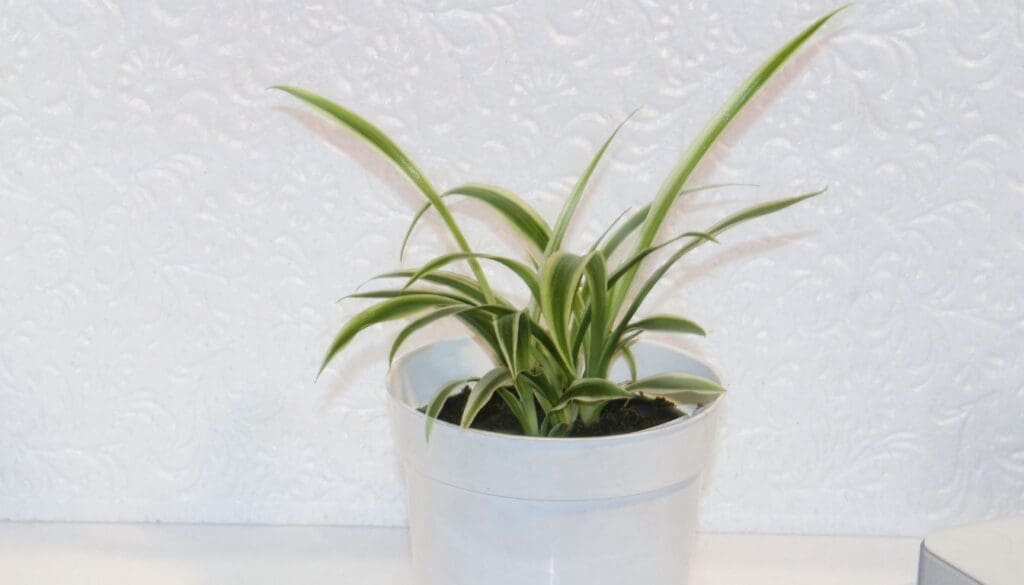
If you have planted your plant in giant pots, you need more soil to plant the spider plant. The pot will hold more water and need to be watered once in a while.
If the pot is large, the plant will have plenty of space and will facilitate your plant’s growth. The water needs will be once a week. However, make sure to water them thoroughly.
Small or medium-sized pots will reduce the frequency of water and also reduce the chances of root rot.
There is no precise amount and frequency of water for any pot size, but watering the plant thoroughly will help the plant to be evenly watered and also let the excess water drain out.
How much water does a spider plant need?
There is never a perfect quantity or amount of water to water your plant. Spider plants need water to thrive and should be watered thoroughly.
While watering your spider plant, you should make sure the excess water is coming out of the drainage holes within 2-3 minutes.
If you water with 1 cup of water, then the excess water might not come out from the drainage holes. But you should make sure that the plant is getting enough water every time you water it.
The soil should get wet completely but should not be sitting in water for too long.
Also, do not water from the top as the foliage will remain wet, attracting pests and other diseases. You must water the soil as that’s where the plant needs it.
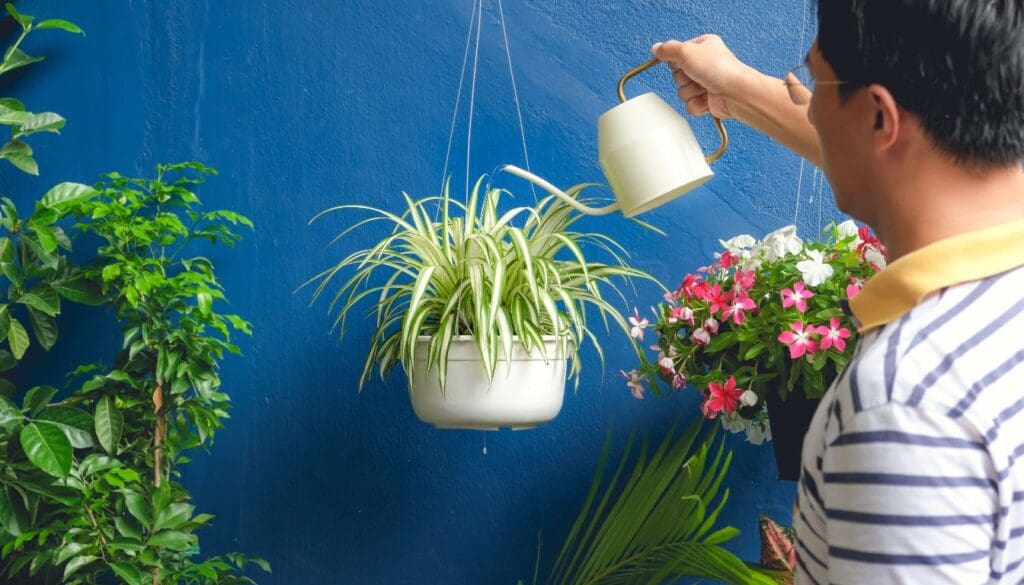
Signs of overwatered spider plant
If you are overwatering your spider plant, then you will notice the following signs:
- Brown spots on leaves
- Yellowing foliage
- Foul odor from soil
- Mushy stems
- Brown tips
- Mold on the surface of the soil
Signs of under-watered spider plant
If you are under watering your spider plant, they will so following signs:
- Drooping leaves
- Wrinkled, crispy leaves
- Brown leaves
- Stagnant growth
- Yellowing and dry brown spots
- Soil pulling from the edges of the pot
The owners must detect these signs early and fix the problems. In case you fail to do so, then there is a high probability that your plant is likely to wilt.
Final words
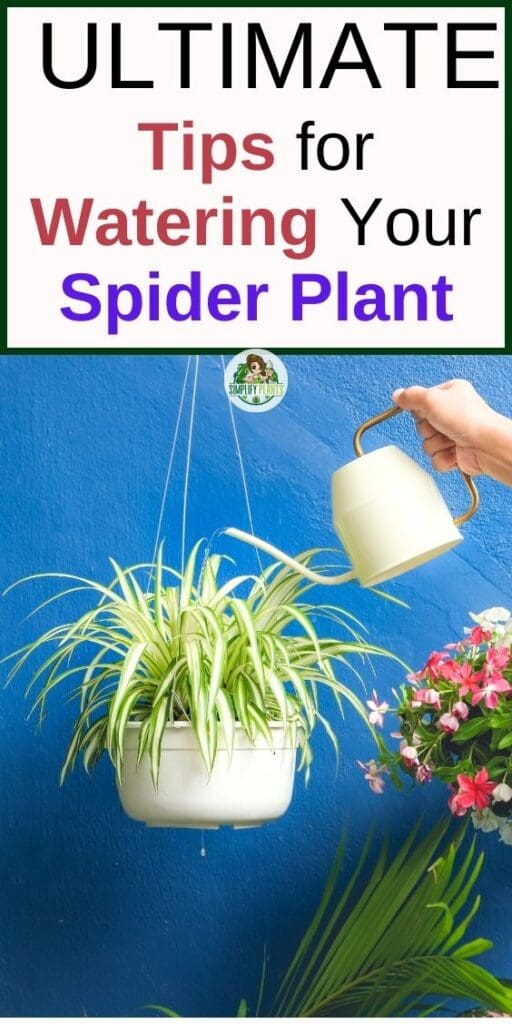
The spider plant’s water requirement varies on many factors, including pot type, pot size, soil, light, season, temperature, humidity, etc.
It will be ideal to check the top 1-2 inches of soil by using a skewer or your finger and only water the plant when the soil feels dry.
You must not water it if there is moisture in the soil as that way, your plant may suffer from root rot and fungal diseases.
Related questions
Should I mist my spider plant?
Preferably you should not mist your spider plant because the leaves if misted, will turn brown with time. There is a high probability of pest and fungal problems as well. However, you can occasionally mist the plant to clean the foliage or spray neem oil to prevent pest problems.
Can I water my spider plant with tap water?
You can water your spider plant with tap water, but if you can use distilled water for your spider plant. The fluoride in tap water can harm your plant, leading to brown leaves, yellow leaves, etc.
It is ideal to fill a bucket and let it sit overnight before watering your spider plant. This way, the chemicals will evaporate, and the water will be safe for your spider plant.
Sources: College of agricultural studies, Spider Plants Introduction, University of Vermont, Spider plant care, National science foundation.
Recommended Garden Supplies
| Product Image | Our Recommended Gardening Supplies | Check Offers! |
|---|---|---|
Top Top
Top
Top
Top
Top
Top
Top
Top | rePotme Houseplant and Tropical Classic Potting Soil Mix | Check Offer On Amazon |
 Top
Top
Top
Top
Top
Top
Top
Top | Espoma Organic Indoor Plant Food | Check Offer On Amazon |
 Top
Top
Top
Top
Top
Top
Top
Top | GooingTop LED Grow Light 6000K Full Spectrum Clip Plant Growing Lamp | Check Offer On Amazon |
 Top
Top
Top
Top
Top
Top
Top
Top | Soil Moisture Meter | Check Offer On Amazon |
 Top
Top
Top
Top
Top
Top
Top
Top | Govee Hygrometer Thermometer, Bluetooth Enabled! | Check Offer On Amazon |
 Top
Top | LEVOIT Humidifiers for Large Room(Best For Plants) | Check Offer On Amazon |
 Top
Top
Top
Top
Top
Top
Top
Top | Upgraded DIY Automatic Drip Irrigation Kit, 15 Potted Houseplants Support | Check Offer On Amazon |
 Top
Top
Top
Top
Top
Top
Top
Top | Stainless Steel Heavy Duty Gardening Tool Set | Check Offer On Amazon |
 Top
Top
Top
Top
Top
Top
Top
Top | Bonide Insecticidal Soap | Check Offer On Amazon |
 Top
Top
Top
Top
Top
Top
Top
Top | Bonide 32 oz Spray Neem Oil for Organic Gardening | Check Offer On Amazon |
 Top
Top
Top
Top
Top
Top
Top
Top | Garden Safe Fungicide | Check Offer On Amazon |


